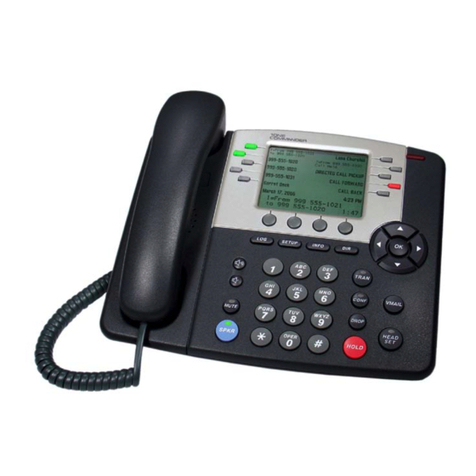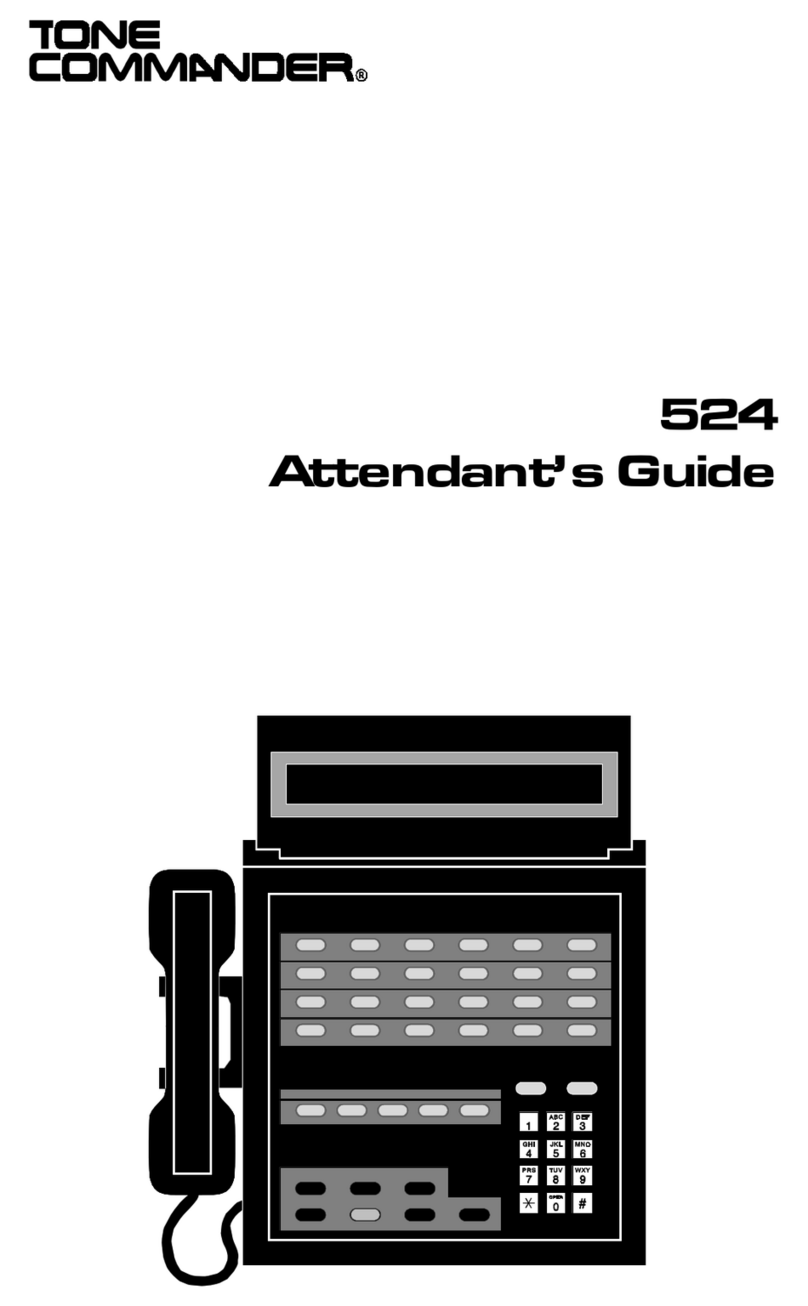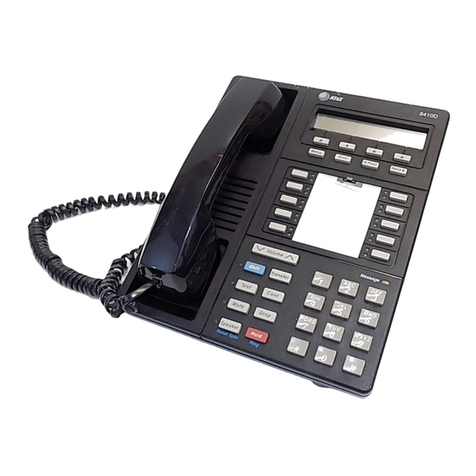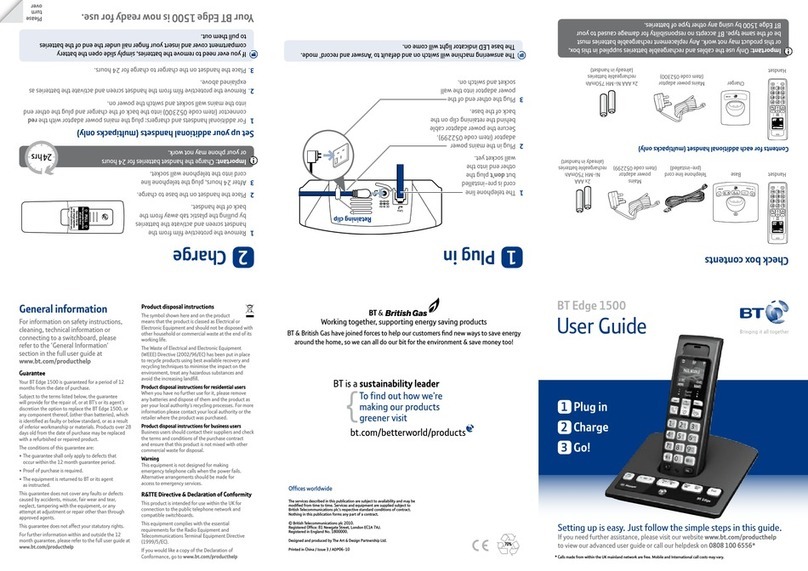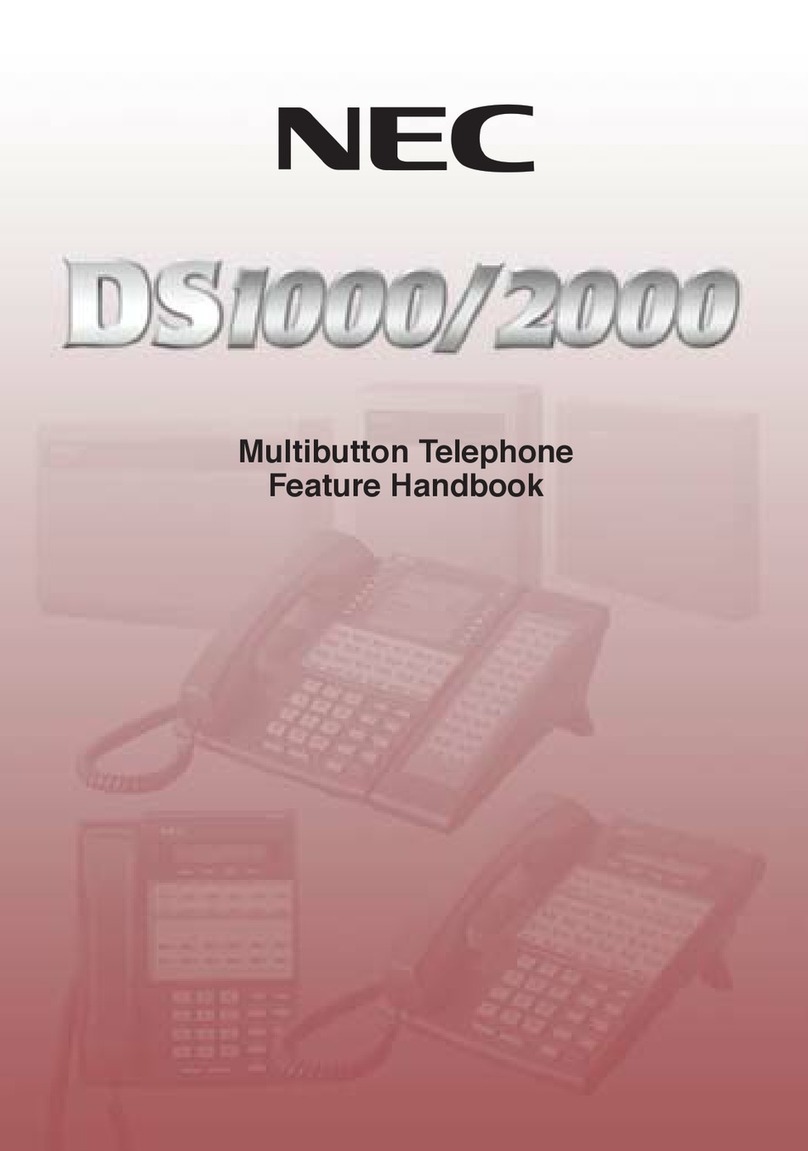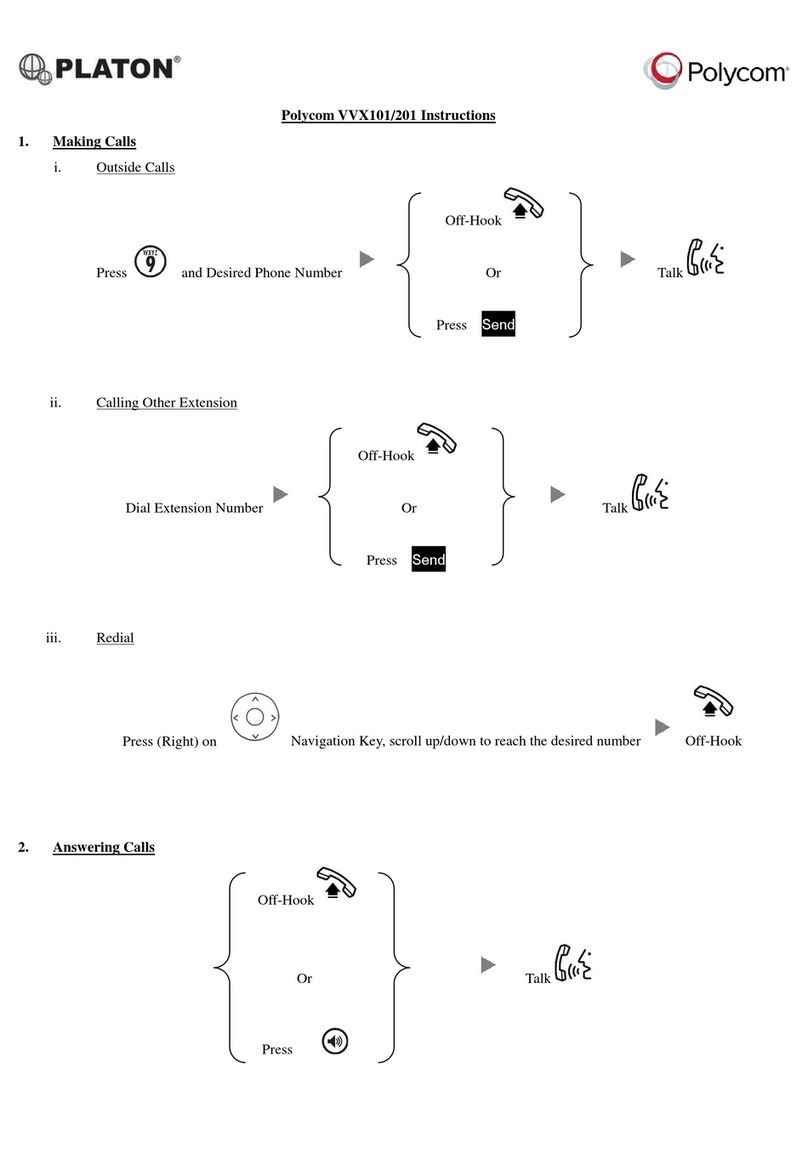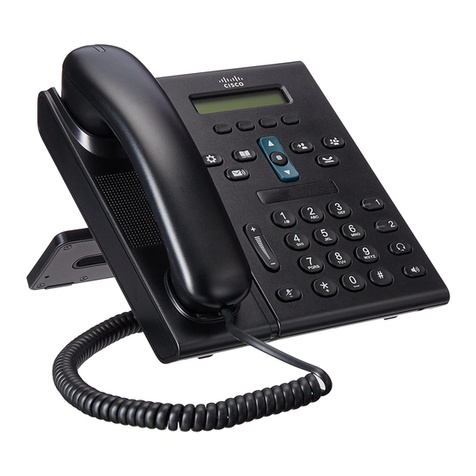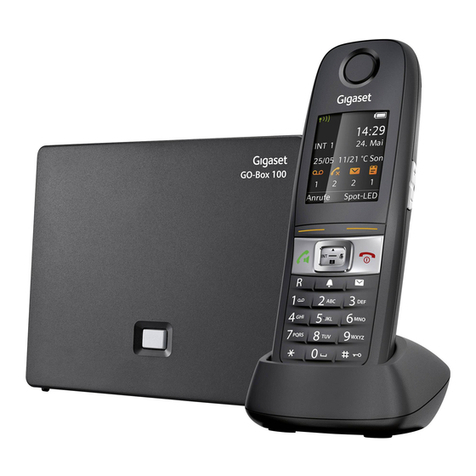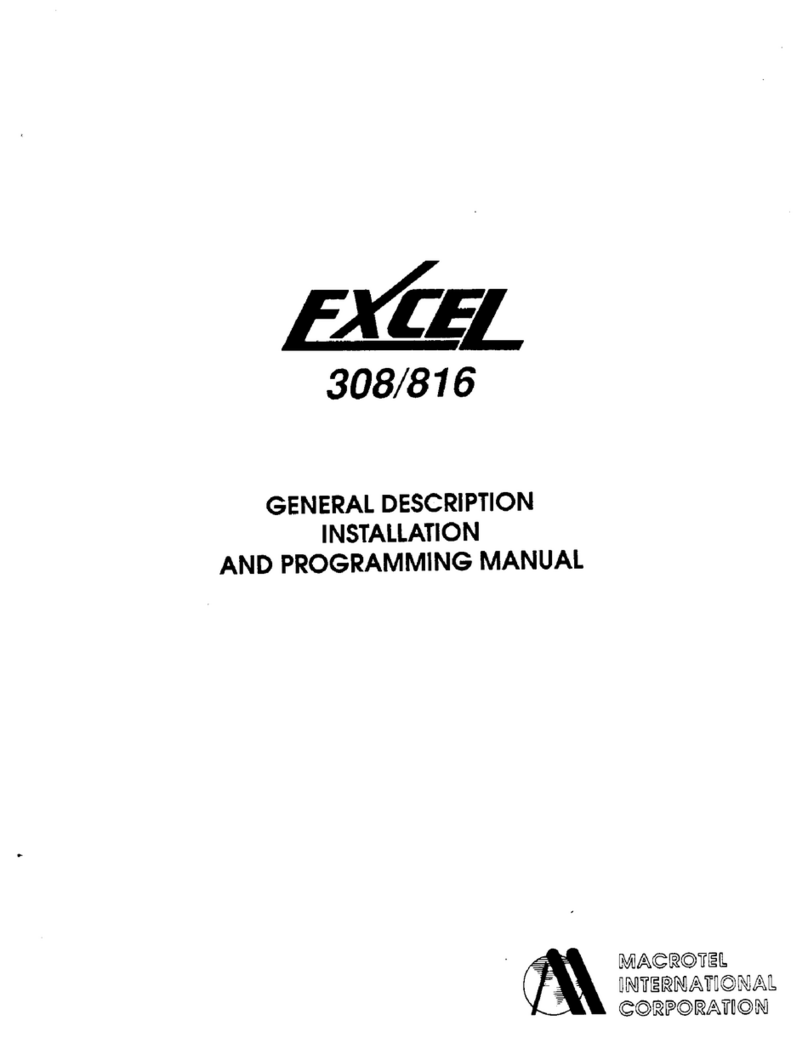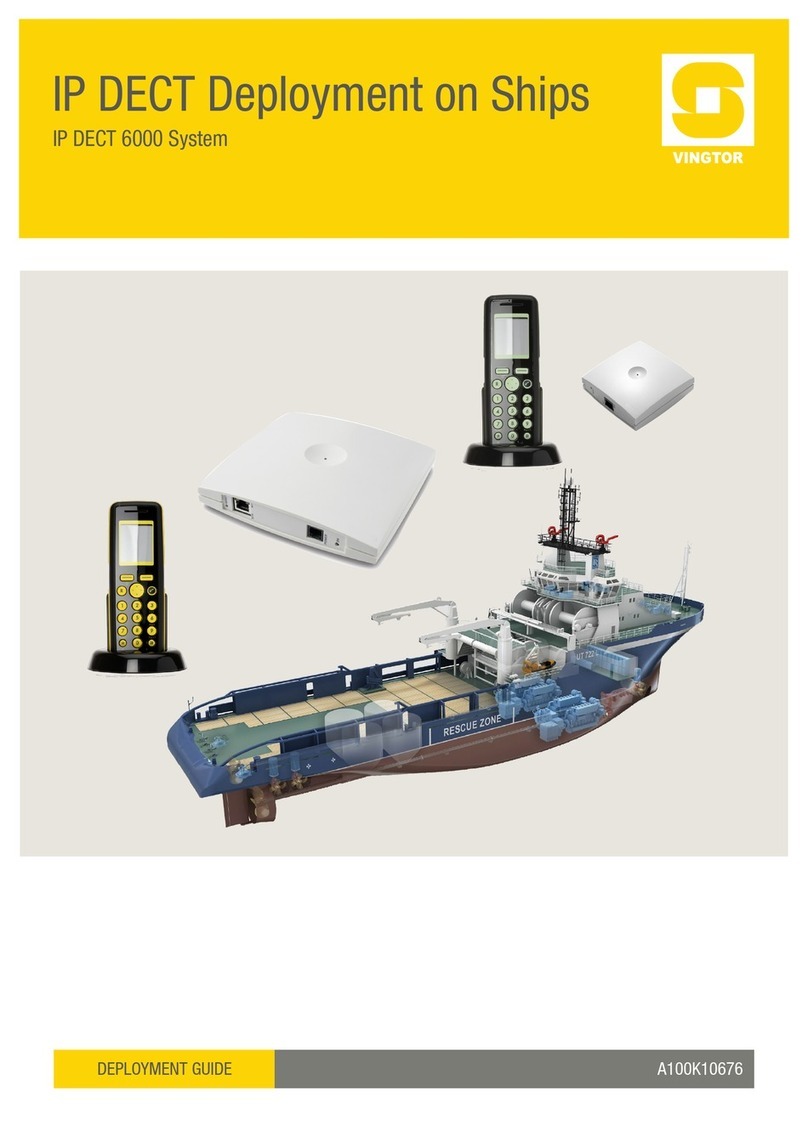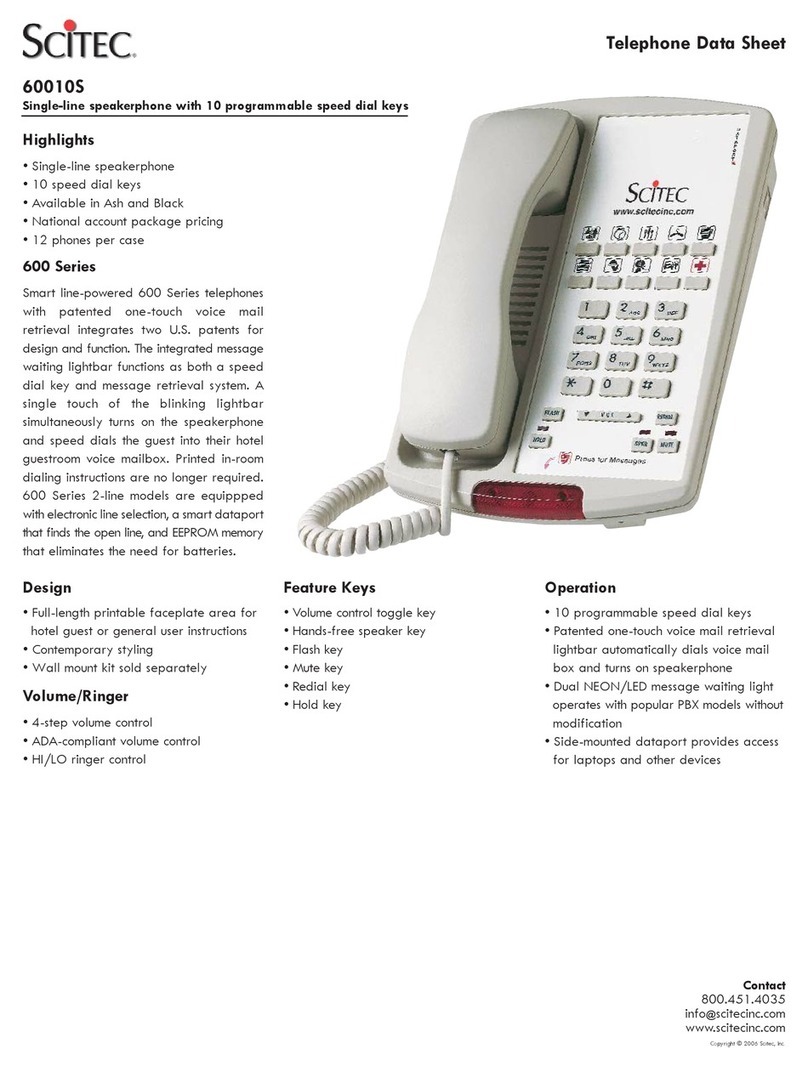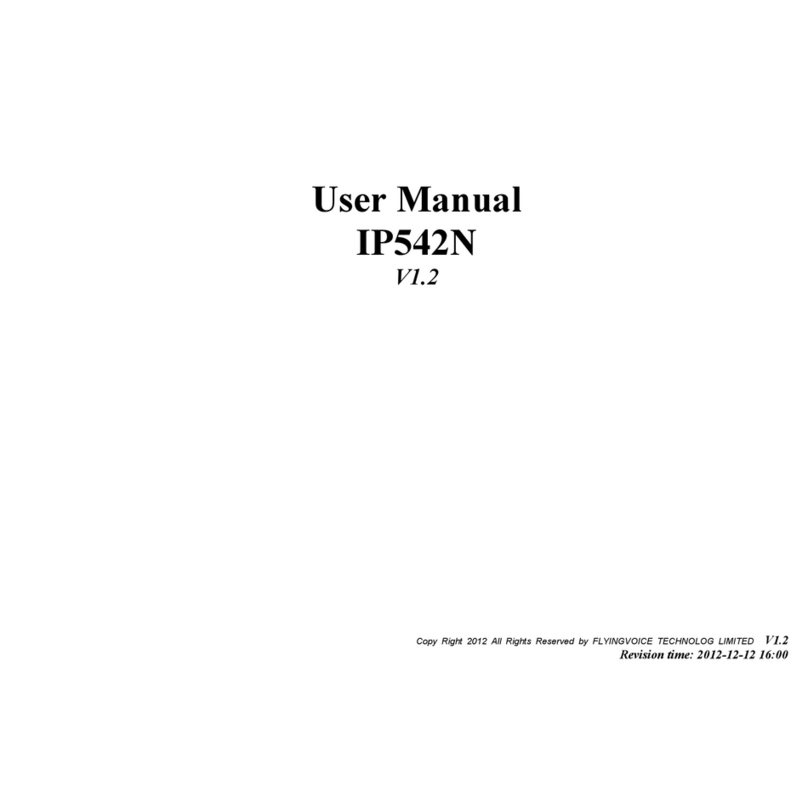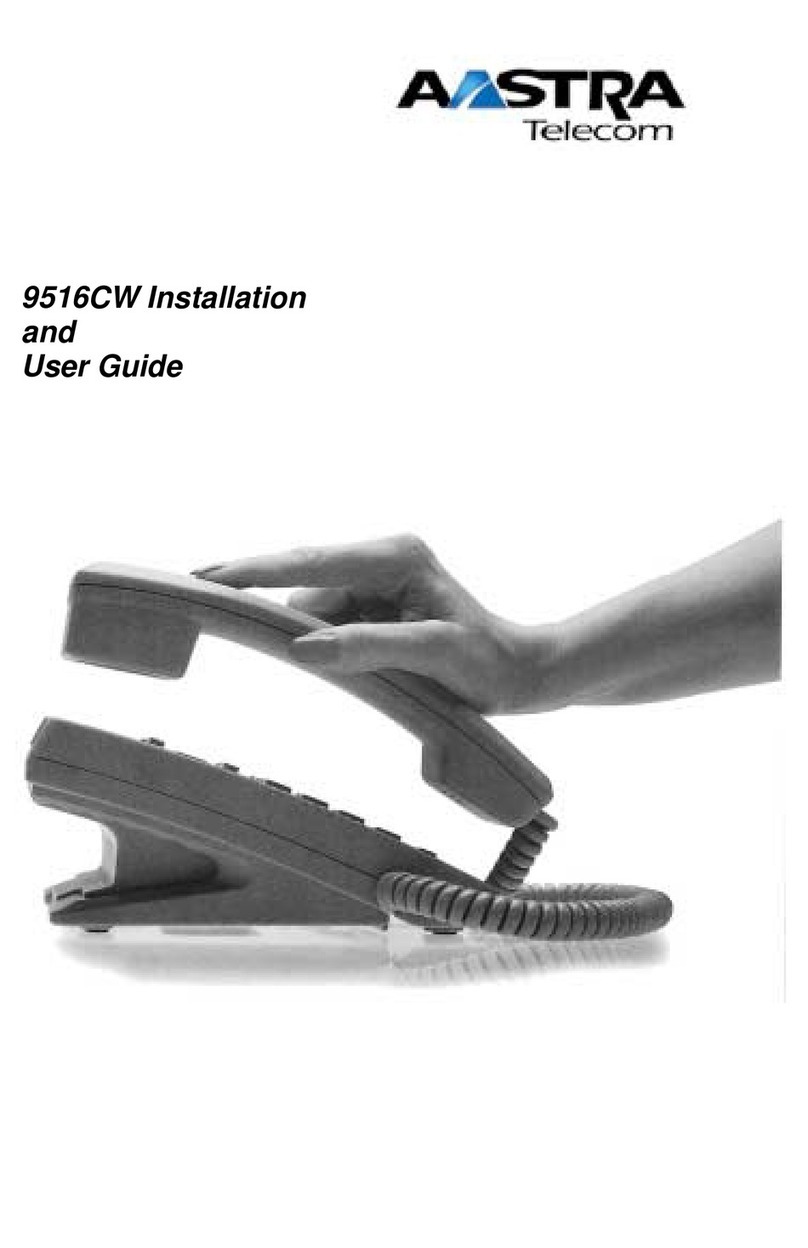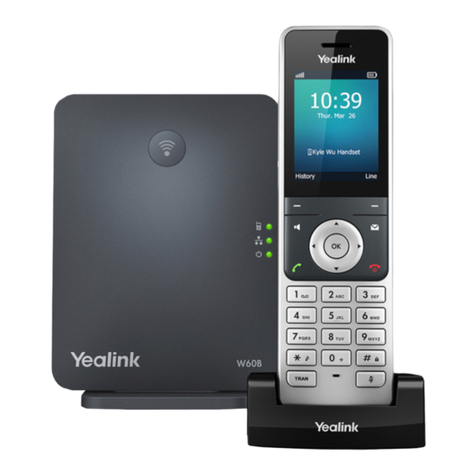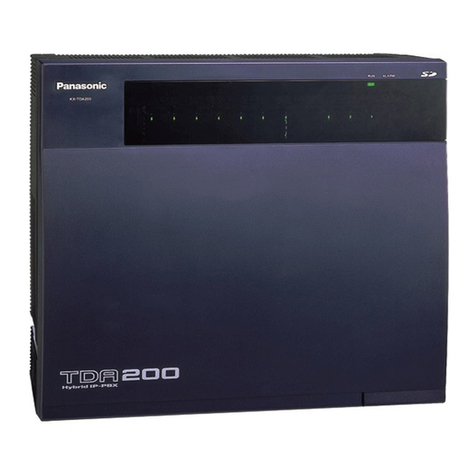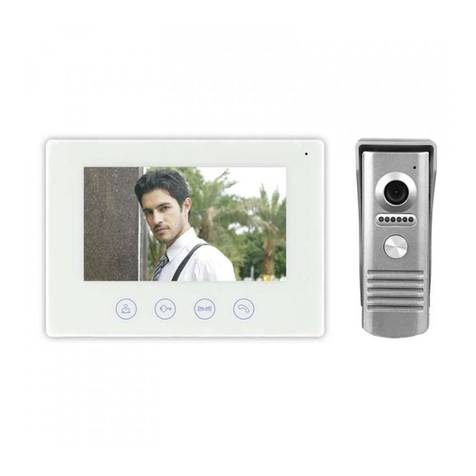Tone Commander 30e120 User manual

30e120
Attendant’s Guide


Introduction . . . . . . . . . . . . . . . . . . . . . . . . . . . 1
Buttons and Indicators . . . . . . . . . . . . . . . . . . . 2
30e Console . . . . . . . . . . . . . . . . . . . . . 2
120 Console . . . . . . . . . . . . . . . . . . . . . 3
Line Buttons . . . . . . . . . . . . . . . . . . . . . 4
DSS (Direct Station Select) Buttons . . . . . . . . . 4
Indicator Light Flash Rates . . . . . . . . . . . . . . 5
Call Processing Buttons . . . . . . . . . . . . . . . 6
Shift Button . . . . . . . . . . . . . . . . . . . . . . 6
Console Ringing . . . . . . . . . . . . . . . . . . . 7
Incoming Call Indications . . . . . . . . . . . . . . . 7
Operation . . . . . . . . . . . . . . . . . . . . . . . . . . . . 9
Call Answering . . . . . . . . . . . . . . . . . . . . . . . 9
Transferring Calls . . . . . . . . . . . . . . . . . . . . . 10
Busy Override . . . . . . . . . . . . . . . . . . . . . . . 14
Call Hold . . . . . . . . . . . . . . . . . . . . . . . . . . 14
Parking Calls . . . . . . . . . . . . . . . . . . . . . . . . 15
Announcing Calls . . . . . . . . . . . . . . . . . . . . . 16
Message Waiting . . . . . . . . . . . . . . . . . . . . . 17
Call Release . . . . . . . . . . . . . . . . . . . . . . . . 18
Call Originating . . . . . . . . . . . . . . . . . . . . . . 18
Night Service . . . . . . . . . . . . . . . . . . . . . . . 19
Quick Mode . . . . . . . . . . . . . . . . . . . . . . . . 20
Adjusting the Handset Volume . . . . . . . . . . . . . . 21
Adjusting the Ringer Volume . . . . . . . . . . . . . . . 21
Setting the Clock . . . . . . . . . . . . . . . . . . . . . . 22
Ring Delays . . . . . . . . . . . . . . . . . . . . . . . . 23
Console Statistics . . . . . . . . . . . . . . . . . . . . . 25
DSS/Autodial Setup . . . . . . . . . . . . . . . . . . . . 26
Name Display Setup . . . . . . . . . . . . . . . . . . . . 28
Using a Headset . . . . . . . . . . . . . . . . . . . . . . 30
Console Care . . . . . . . . . . . . . . . . . . . . . . . . . . 30
Contents
Tone Commander 30e120 Attendant’s Guide i

FCC Warning
This equipment has been tested and found to comply with
the limits for a Class A digital device, pursuant to Part 15 of
the FCC Rules. These limits are designed to provide
reasonable protection against harmful interference when
the equipment is operated in a commercial environment.
This equipment generates, uses, and can radiate radio
frequency energy and, if not installed and used in
accordance with the instruction manual, may cause harmful
interference to radio communications. Operation of this
equipment in a residential area is likely to cause harmful
interference in which case the user will be required to
correct the interference at his own expense.
ii Tone Commander 30e120 Attendant’s Guide

The Tone Commander 30e console provides an easy to use
answering position for Centrex or PABX lines. Calls may be put
on hold or transferred from the console. Your system may have
up to four attendant positions.
The companion 120 BLF/DSS console adds autodialing,
message waiting light control, and station status display for up to
120 stations. Each attendant position can include two 120
consoles, for a maximum capacity of 240 stations.
The features of the Tone Commander 30e/120 include:
PERSONALIZED
STATION
IDENTIFICATION
– each station may be optionally displayed
with the user’s or department name.
DSS (Direct
Station Select)
– autodials a station’s number with a single
button.
INDICATOR
LIGHTS
– show the status of each line or station by
various flash rates.
RECALL – an unanswered call extended via a DSS
button will recall the console after a
number of rings set by the installer.
HOLD RECALL – calls left on hold longer than the time
selected by the installer will recall the
attendant.
AUTOMATIC
HOLD
– the previous call is automatically placed on
hold when the ANSWER button or another
line button is pressed.
RING DELAY – the attendant can program the console to
begin ringing after the line or station has
rung from 1 to 9 times.
CONSOLE
STATISTICS
RECORDING
– the system keeps track of call handling
statistics for each attendant position.
Buttons and indicators on the 30e and 120 consoles are
described on the following pages.
Introduction
Tone Commander 30e120 Attendant’s Guide 1

Buttons and Indicators
30e Console
DIAL PAD
used for dialing
and accessing
system features.
DISPLAY
a 20 character display gives the attendant
diverse information during operation of the
console, including a ringing station’s number or
user name. A time of day clock is displayed
when the console is idle. (see page 7)
CALL
PROCESSING
BUTTONS
(see page 6)
SHIFT
BUTTON
accesses the
stations
represented
by the lower
lights next to
the 120
console’s
DSS buttons.
(see page 6)
VOLUME
BUTTONS
adjust the
volume of
the console’s
ringer and
handset
receiver.
(see page 21)
LINE BUTTONS
select individual telephone
lines for calling or answering,
and access special features
of your system such as
paging.
(see page 4)
2 Tone Commander 30e120 Attendant’s Guide

120 Console
DSS
BUTTONS
(see page 4)
Tone Commander 30e120 Attendant’s Guide 3

Line Buttons
Line buttons connect telephone lines to the handset, for incoming
or outgoing calls. Some special features of your telephone
system such as paging, call parking, and busy override are
accessed via line buttons.
DSS (Direct Station Select) Buttons
DSS buttons originate and transfer calls with a single button.
Each button can accommodate two stations. The station
represented by the lower light is accessed by first pressing the
SHIFT button.
Spare DSS buttons may be used for autodialing (speed dialing)
frequently-dialed numbers.
HOLD LIGHTS
winking – line is on hold
flashing – line that has
been on hold for too long
is ringing at the console
LINE STATUS LIGHTS
off – line is idle, or special feature
is inactive
slow blinking – line is ringing,
but not yet at the console
(delayed ringing)
flashing – line is ringing at the
console, or special feature is
active
flickering – line is currently in
use at the console (I-Use line)
on steady – line is in use at
another console, or special
feature is active
STATION STATUS LIGHTS
off – station is idle
slow blinking – call is ringing at the
station, but not at the console
(delayed ringing)
flashing – call is ringing at both the
station and the console
on steady – station is busy; also
indicates a waiting message after
the MESSAGE button has been
pressed.
flickering – station has been
selected for DSS dialing
4 Tone Commander 30e120 Attendant’s Guide

Indicator Light Flash Rates
50% on, 50% off; slow rate
50% on, 50% off; fast rate
50% on, 50% off; very fast rate
mostly off, with brief on flashes
mostly on, with brief off flashes; fast rate
mostly on, with brief off flashes; slow rate
steady on, followed by two quick flashes
flashing
fast flashing
flickering
slow blinking
winking
slow winking
night
= light on = light off
3 seconds
Tone Commander 30e120 Attendant’s Guide 5

Call Processing Buttons
Shift Button
Some stations or autodial numbers are represented by the lower
lights next to the 120 console’s DSS buttons. Dialing is initiated
by first pressing and releasing the SHIFT button on the 30e
console, then pressing the DSS button. The 120 console will
automatically switch back to the upper stations after completing
an operation, or you can manually select the upper stations by
pressing the SHIFT button again. The lights beside the button
indicate which group of stations is currently selected.
RELEASE
disconnects
the attendant
from a call
RING DELAY
programs or
reads ring
delay values
for lines and
stations
ANSWER
answers the
ringing call
(line or
station) that
is shown in
the display
TRANSFER
used to
manually
transfer calls
or cancel a
DSS selection
HOLD
puts the
selected line
on hold
PICK UP
answers ringing
station calls not
shown in the
display (used
with DSS)
CONNECT
connects
calls to
stations
MESSAGE
turns station
message
waiting lights
on or off
(optional)
6 Tone Commander 30e120 Attendant’s Guide

Console Ringing
Lines
1 or 2 warble tones every 4 seconds indicates a ringing
incoming call on any line.
Incoming call ringing rate is determined by the source of the call, and
depends upon the type of telephone system the 30e/120 consoles are
connected to. Consult with the installer for your system’s ringing rates.
3 warble tones every 4 seconds will be heard when a line that
was left on hold or park too long is ringing at the console
(recall).
Stations
1 (or 3) steady tones every 4 seconds indicates unanswered
station ringing or recall.
The number of tones heard during ringing station calls is selectable
by the installer.
Incoming Call Indications
Ringing calls are queued for answering in the order received.
The display will show the source of the oldest ringing call. The
number of additional calls waiting to be answered is shown on the
right side of the display.
When a line is accessed and another line rings, the ringing tone is
shortened. This feature allows attendants to process calls with less
background ringing at the console.
RNG LIZ BARRETT 3
an unanswered call ringing at a station,
with three additional ringing calls
Tone Commander 30e120 Attendant’s Guide 7

The abbreviation for the type of call will be followed by a name if
the line or station has been programmed with a name display.
Otherwise, the line or station number will be displayed.
Optional display for monitored P-phone stations:
INC name or line #
incoming attendant call
RNG name or station #
unanswered station call
RCL name or station #
unanswered station call previously
transferred by the attendant
NXF name or station #
call that failed to properly transfer to a station
HLD name or line #
call that has been left on hold too long
CMP name or line #
call that has been camped on
to a station too long
PRK name or station #
call that has been parked too long
(see page 15 for call parking instructions)
CFD forwarded-from name or #
ringing forwarded call
8 Tone Commander 30e120 Attendant’s Guide

Call Answering
The source of the oldest call waiting to be answered is shown in
the display – see page 7.
To answer the call shown in the display:
aPress the ANSWER button.
To answer a ringing line not shown in the display:
aPress the line button for the ringing line.
To answer (pick up) a ringing station call not shown in
the display:
aPress PICK UP.
aPress the DSS button for the ringing station.
Operation
Tone Commander 30e120 Attendant’s Guide 9

After answering, you may:
•transfer the call to a station
•transfer the call to a voice mail system
•park the call for answer at any station
•put on the call hold
•announce the call over a paging system
•turn on a message waiting light at the station
•release (disconnect/hang up) the call
Transferring Calls
Calls may be transferred by several methods.
When a call is screened, the caller is put on hold while you speak
privately with the called party and ask them if they will accept the
call. You can then return to the caller and transfer or terminate
the call.
Unscreened calls are transferred without any screening of the
called party.
If the called party is busy, the call can be camped on to the busy
station. The call will be on hold until the busy station hangs up,
then it will ring at the station. Calls that have been camped on too
long will ring at the console. Some systems may not have the
camp-on feature.
A call for someone who is away from their station set can be
parked. The call can be picked up at any station by dialing a
special code. This feature is optional, and may not be provided
with your telephone system.
Stations may be dialed by pressing the appropriate DSS button,
or manually with the dial pad if the you do not have a 120
console or have no DSS button programmed for the desired
station.
The various call transfer procedures differ slightly, and are
described below.
10 Tone Commander 30e120 Attendant’s Guide

To transfer a call to a station
(unscreened by the attendant):
aPress the DSS button for the desired station.
Only the DSS, CONNECT, or TRANSFER
button may be pressed until call transfer has
been completed or canceled.
One of the following three displays will be
shown:
aPress the CONNECT button to transfer the
call.
If the wrong DSS button was selected, press
the TRANSFER button to cancel dialing.
aPress the CONNECT button to camp on the
call. The call will be transferred when the
station hangs up. The station message lamp,
if provided, will flash while the call is camped
on.
Press the TRANSFER button to cancel dialing
To override the station busy condition, refer to
page 14.
Dialing is automatically canceled. You will
remain connected to the caller.
To override the station busy condition, refer to
page 14.
DIL JIM HUTCHINS
– ready to dial an idle station
or
CMP JIM HUTCHINS
– station busy, ready to camp on
or
or
BUSY
– station is busy, dialing not allowed
or
Tone Commander 30e120 Attendant’s Guide 11

To transfer a call to a station
(screened by the attendant):
aPress the DSS button for the desired station.
Only the DSS, CONNECT, or TRANSFER
button may be pressed until call transfer has
been completed or canceled.
One of the following three displays will be
shown:
aPress the DSS button again. “DIL” in the
display will change to “SCN”.
aWait for the called party to answer, then ask
them if they will accept the transferred call.
aIf yes, press the RELEASE button. The calling
party will be connected to the called party.
If no, press the TRANSFER button, wait to be
reconnected to the calling party, then press
the TRANSFER button again to disconnect
the called station.
The call may now be released, put on hold, or
transferred to another station.
Press the TRANSFER button to cancel dialing
and return to the calling party.
Dialing is automatically canceled. You will
remain connected to the caller.
DIL MARY OAKLAND
– ready to dial an idle station
or
CMP MARY OAKLAND 2
– ready to camp on to a busy station
BUSY
– station is busy, dialing not allowed
12 Tone Commander 30e120 Attendant’s Guide

To transfer a call manually, using the dial pad:
aPress the TRANSFER button, then wait for
dial tone.
aDial the station number.
aWait for the called party to answer, then ask
them if they will accept the transferred call.
aIf yes, press the RELEASE button.
If no, press the TRANSFER button, wait to be
reconnected to the calling party, then press
the TRANSFER button again to disconnect
the called station.
or
Tone Commander 30e120 Attendant’s Guide 13

Busy Override
Some situations require the console to ignore a station busy
condition during call transfer. An example is a station that is
call-forwarded on busy to a voice mail system. Some stations on
the DSS console may be set to automatically override station
busy.
To override a station busy condition:
aPress the OVERRIDE button.
aPress the DSS button for the desired station.
aPress the CONNECT button to transfer the
call.
Call Hold
To place a call on hold:
aPress the HOLD button.
Answer or place another call. The first call is
automatically placed on hold.
Calls that are on hold longer than a preset time will ring at the
console.
OVR - - - - - - -
Some systems may not be configured for busy override.
OVR JANE ANDERSON
or
14 Tone Commander 30e120 Attendant’s Guide

Parking Calls
Calls may be parked for remote answer at any station, if this
feature is available on your telephone system. The caller is on
hold while the call is parked. The called party must dial a special
code to answer the call.
To park a call:
aNote which line is currently in use
(the telephone symbol will be flickering).
aPress the CALL PARK button.
aPress the DSS button for the desired station.
aPress the CONNECT button.
aPress the PAGE button.
Announce the call, and the call pickup code
that is needed to answer the call.
Call Pickup Code:
(ask your installer)
For example, if the pickup prefix is w0and a
call for Fred Smith was answered on line 227,
the call would be announced as “Fred Smith,
call on w0227.”
aPress the RELEASE button when finished
paging.
Calls that are parked longer than a preset time will ring at the
console.
PRK - - - - - - - -
PRK STEVE JONES
+line number
pickup prefix
Tone Commander 30e120 Attendant’s Guide 15

To retrieve a parked call from any station:
aFrom any station, dial the call pickup code
announced by the attendant.
Announcing Calls
To announce a call over an in-house paging system:
aPress the PAGE button. The outside line is
put on hold.
aAnnounce the call.
aPress the RELEASE button to disconnect
from the page. The outside line will remain on
hold.
PAGE 3:18
16 Tone Commander 30e120 Attendant’s Guide
Other manuals for 30e120
1
Table of contents
Other Tone Commander Telephone manuals
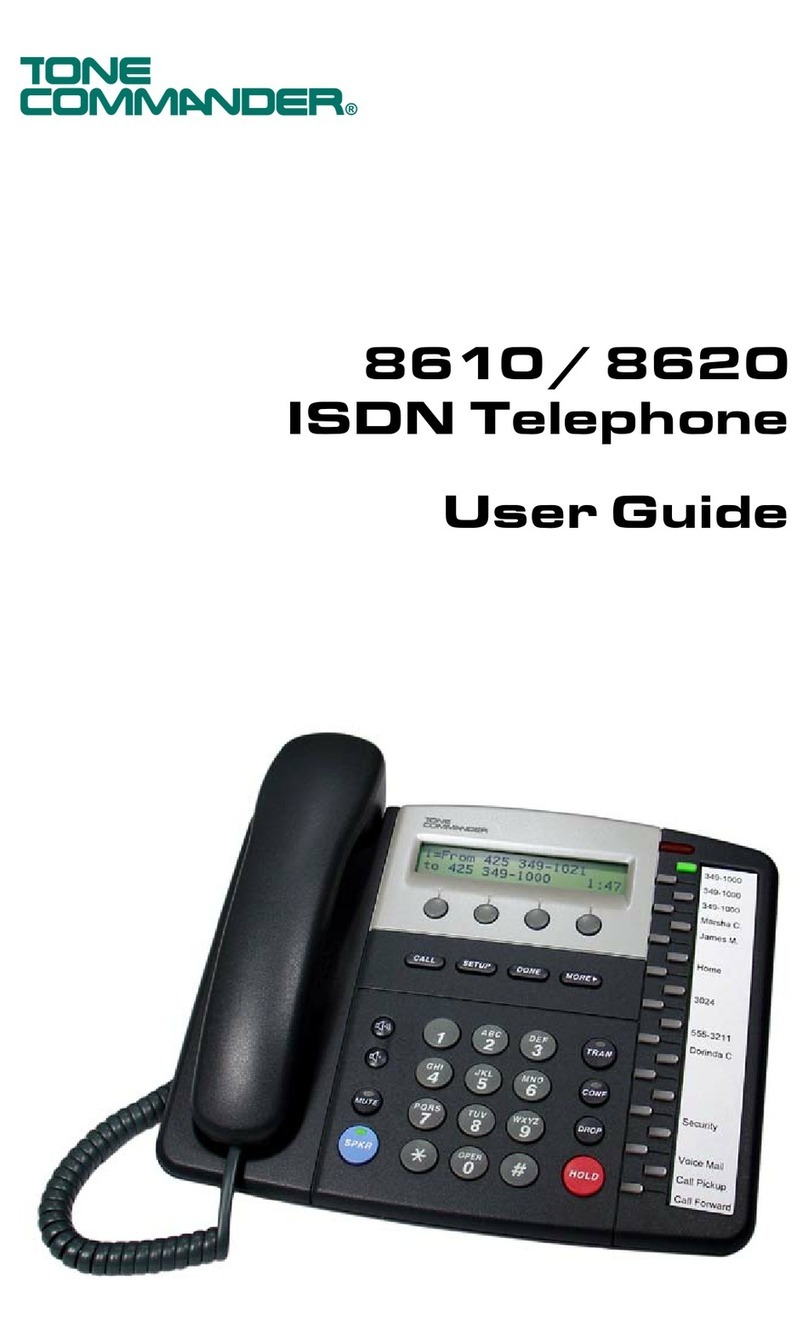
Tone Commander
Tone Commander 8610 User manual

Tone Commander
Tone Commander 8610 User manual
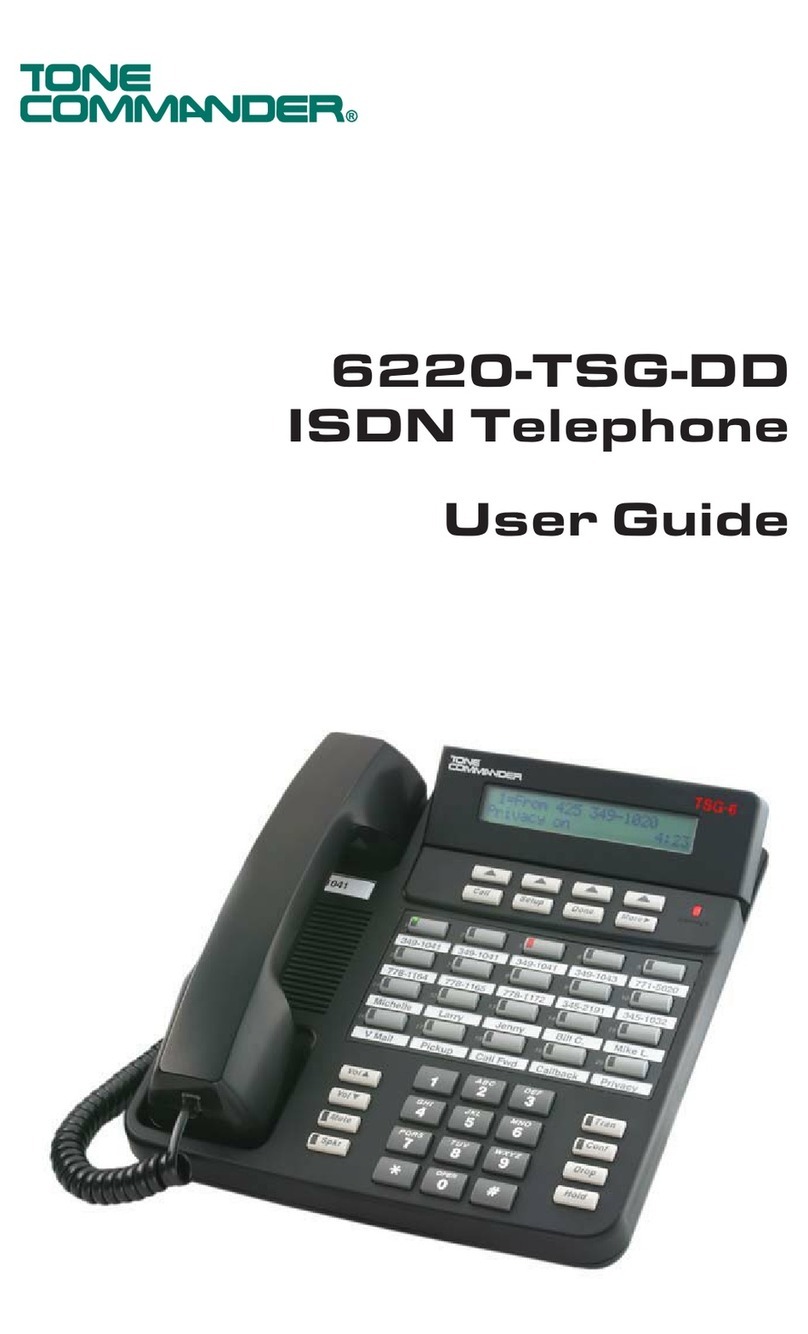
Tone Commander
Tone Commander 6220-TSG-DD User manual
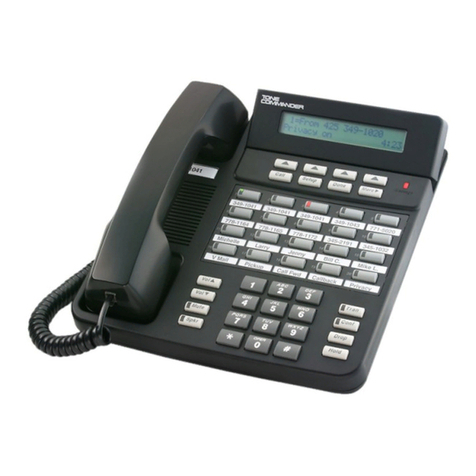
Tone Commander
Tone Commander 6210 User manual
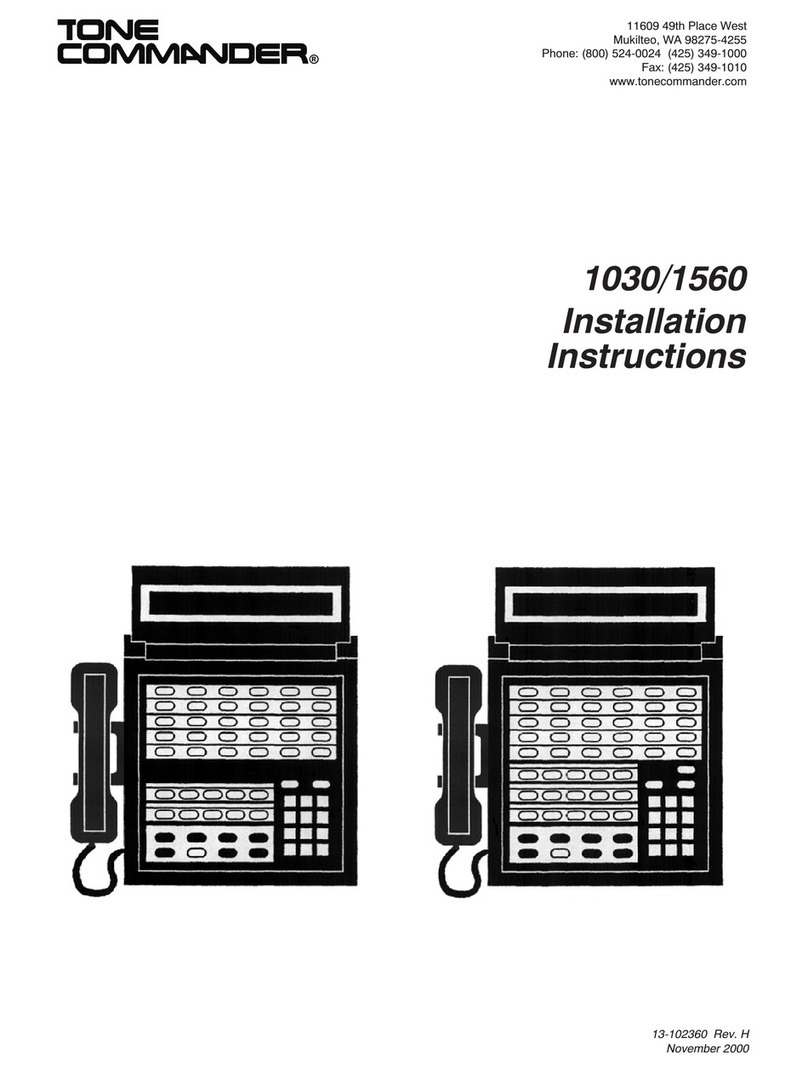
Tone Commander
Tone Commander 1030 User manual

Tone Commander
Tone Commander 1560 User manual
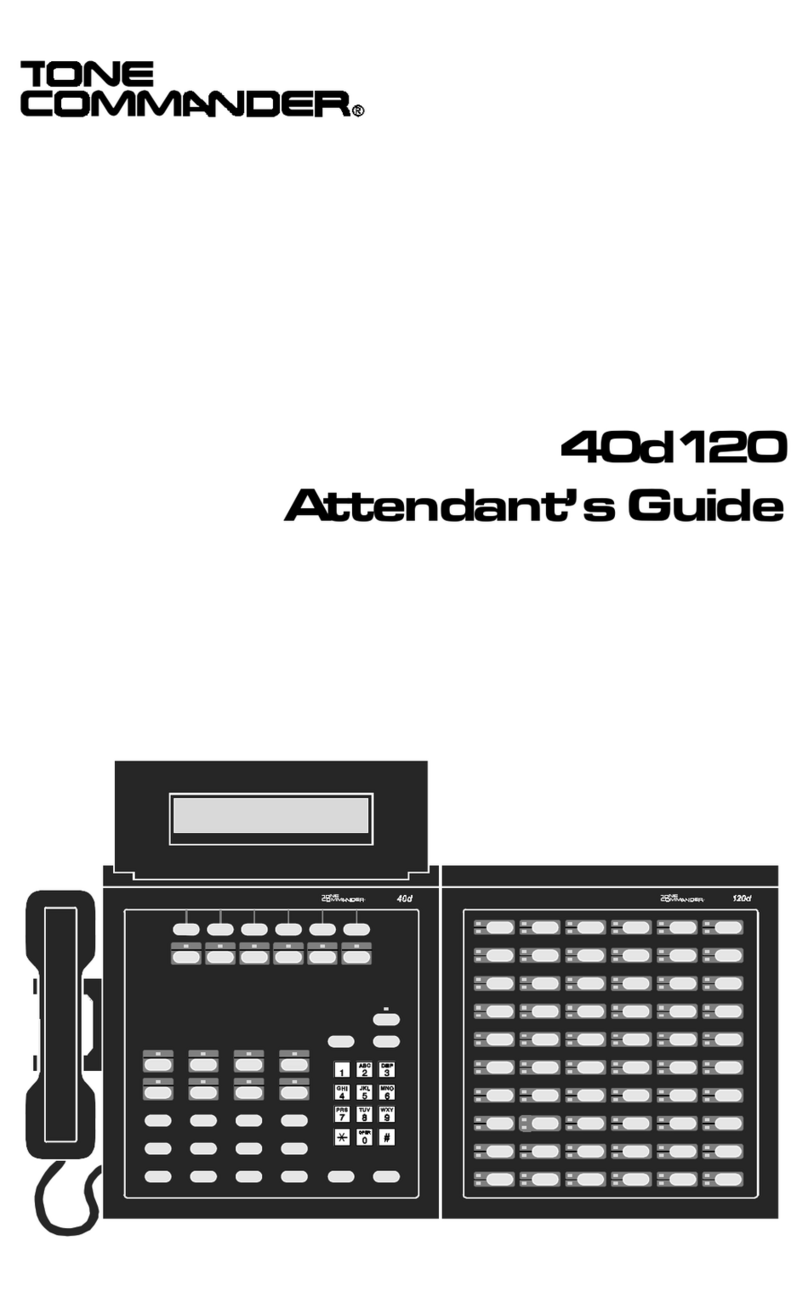
Tone Commander
Tone Commander 40d120 User manual
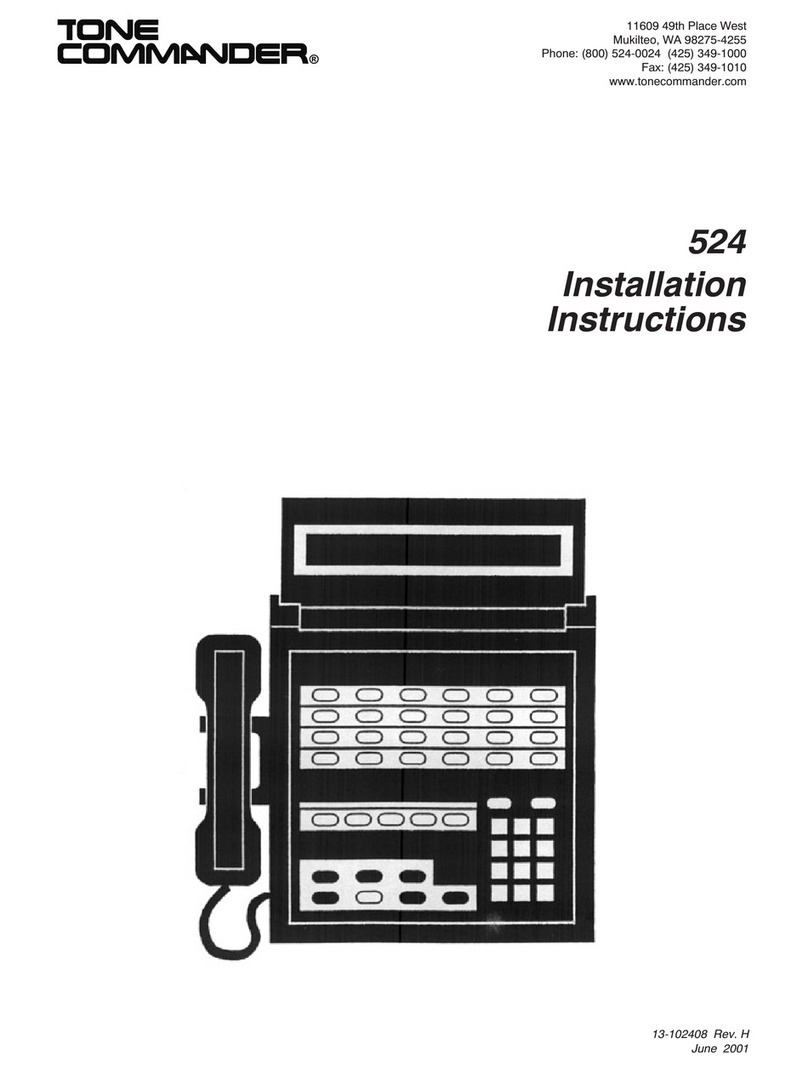
Tone Commander
Tone Commander 524 User manual
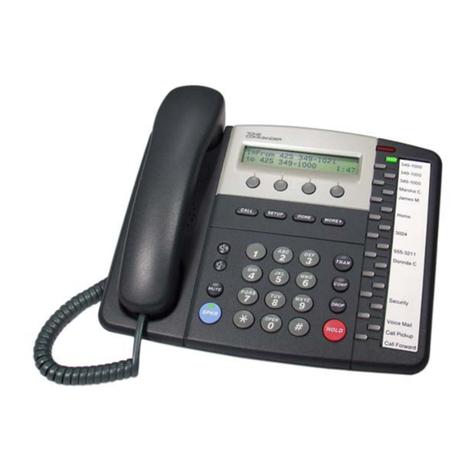
Tone Commander
Tone Commander 8610 User manual

Tone Commander
Tone Commander 6220T-TSG User manual
